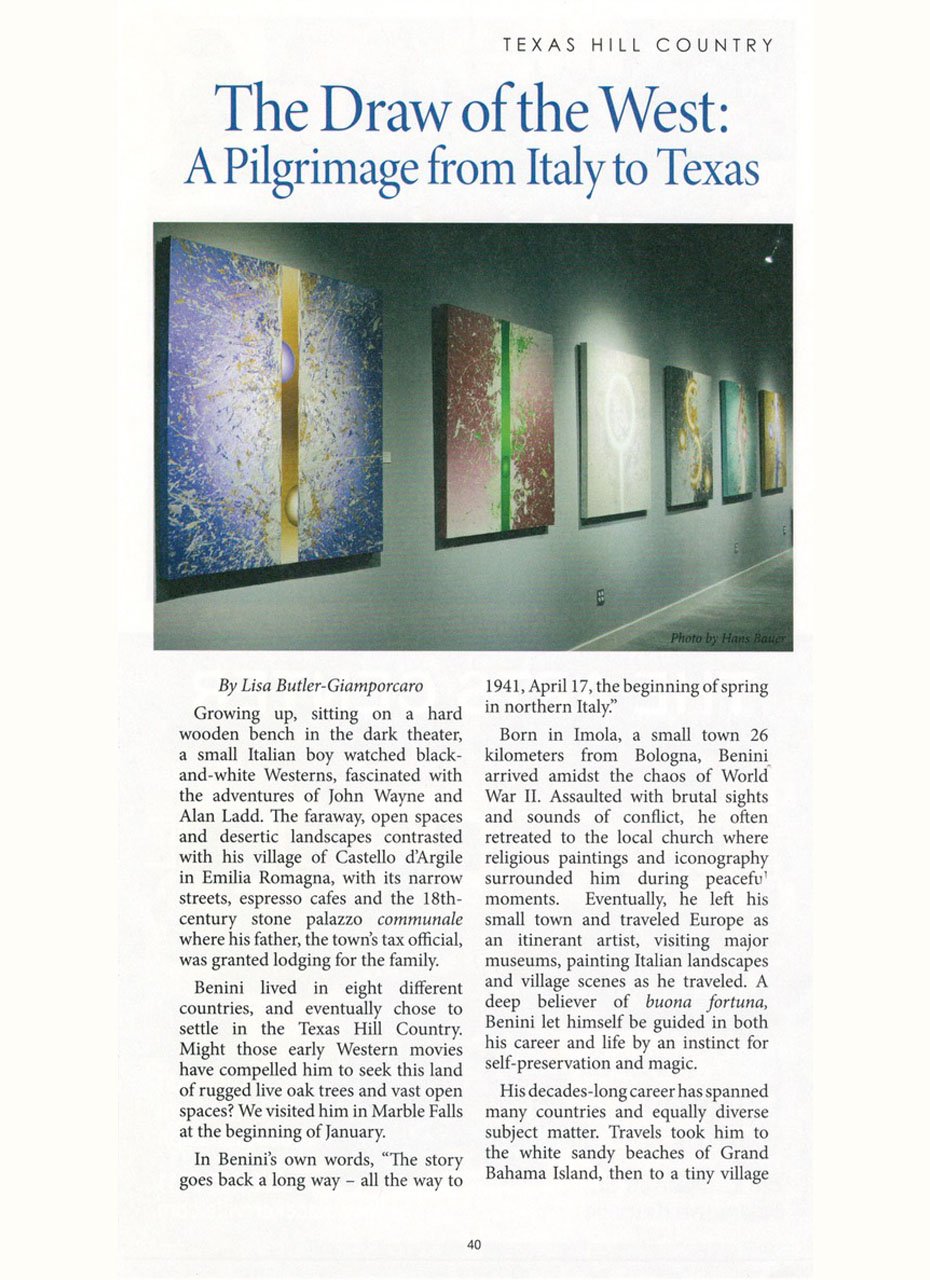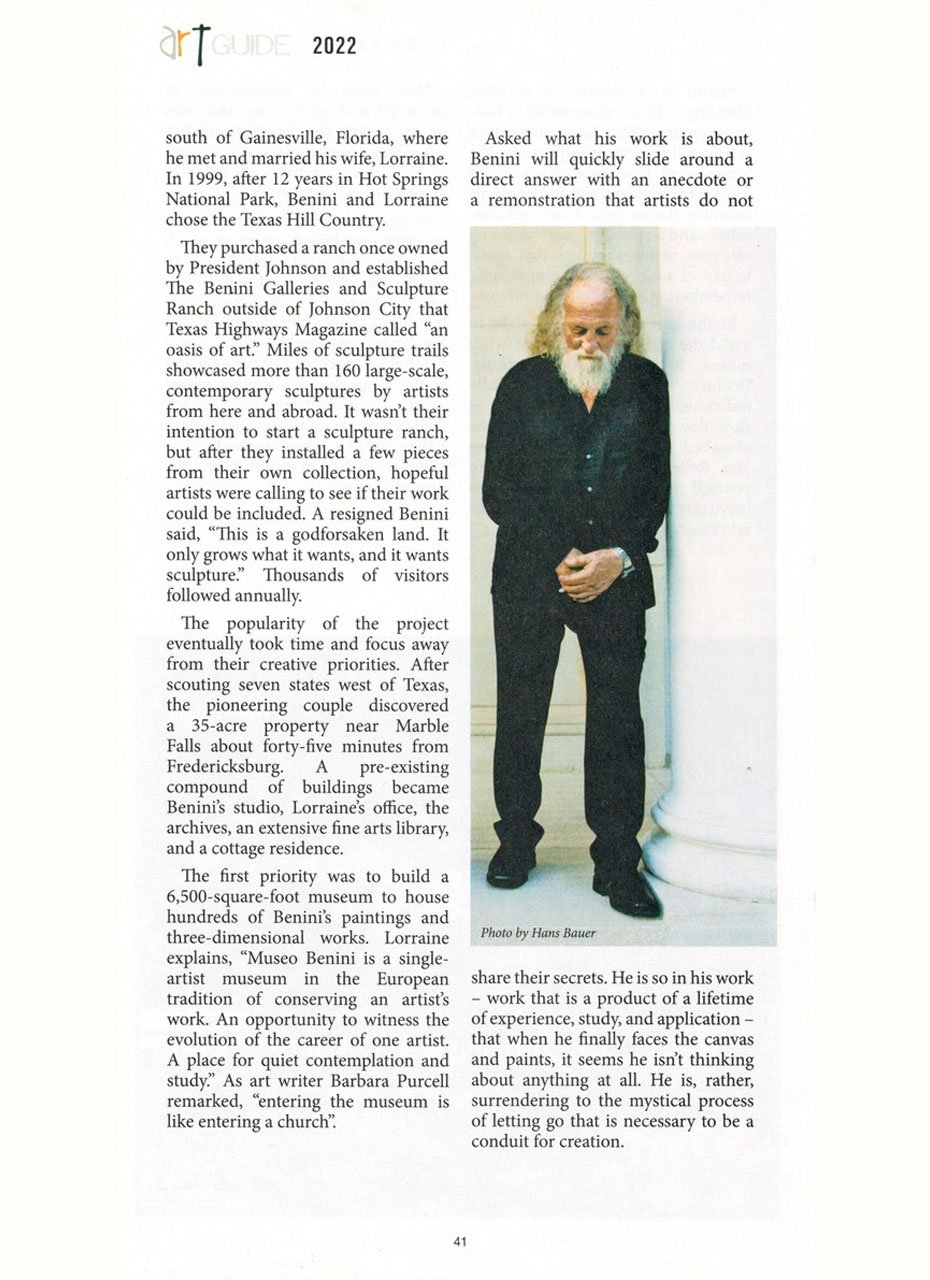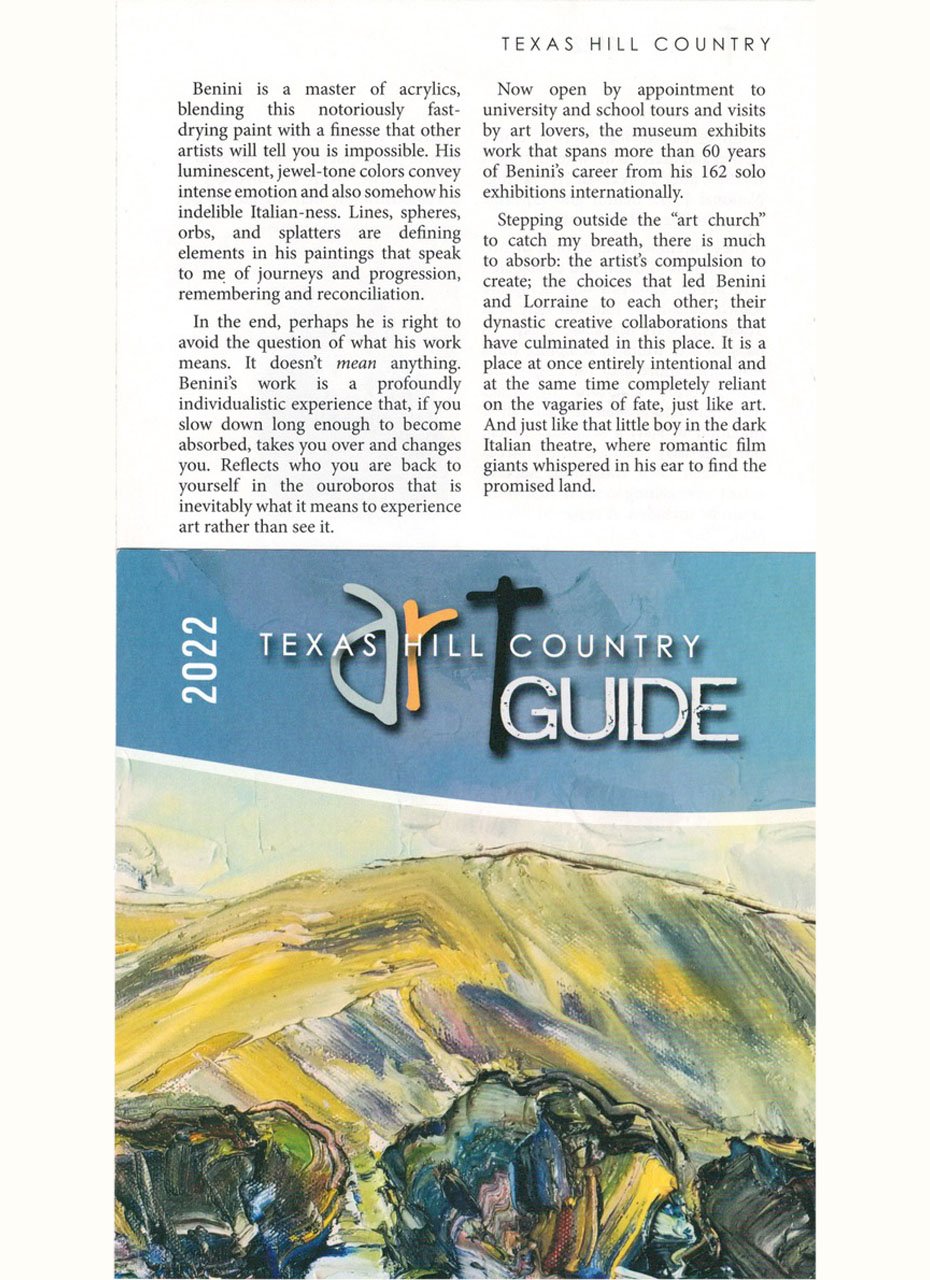Fredericksburg Art Guide 2022
Growing up, sitting on a hard wooden bench in the dark theater, a small Italian boy watched black-and-white Westerns, fascinated with the adventures of John Wayne and Alan Ladd. The faraway, open spaces and desertic landscapes contrasted with his village of Castello d'Argile in Emilia Romagna, with its narrow streets, espresso cafes and the 18th-century stone palazzo communale where his father, the town's tax official, was granted lodging for the family.
Benini lived in eight different countries, and eventually chose to settle in the Texas Hill Country. Might those early Western movies have compelled him to seek this land of rugged live oak trees and vast open spaces? We visited him in Marble Falls at the beginning of January. In Benini's own words, "The story goes back a long way - all the way to 1941, April 17, the beginning of spring in northern Italy.!"
Born in Imola, a small town 26 kilometers from Bologna, Benini arrived amidst the chaos of World War II. Assaulted with brutal sights and sounds of conflict, he often retreated to the local church where religious paintings and iconography surrounded him during peaceful moments. Eventually, he left his small town and traveled Europe as an itinerant artist, visiting major museums, painting Italian landscapes and village scenes as he traveled. A deep believer of buona fortuna, Benini let himself be guided in both his career and life by an instinct for self-preservation and magic.
His decades-long career has spanned many countries and equally diverse subject matter. Travels took him to the white sandy beaches of Grand Bahama Island, then to a tiny village south of Gainesville, Florida, where he met and married his wife, Lorraine. In 1999, after 12 years in Hot Springs National Park, Benini and Lorraine chose the Texas Hill Country.
They purchased a ranch once owned by President Johnson and established The Benini Galleries and Sculpture Ranch outside of Johnson City that Texas Highways Magazine called "an oasis of art." Miles of sculpture trails showcased more than 160 large-scale, contemporary sculptures by artists from here and abroad. It wasn't their intention to start a sculpture ranch, but after they installed a few pieces from their own collection, hopeful artists were calling to see if their work could be included. A resigned Benini said, "This is a godforsaken land. It only grows what it wants, and it wants sculpture? Thousands of visitors followed annually.
The popularity of the project eventually took time and focus away from their creative priorities. After scouting seven states west of Texas, the pioneering couple discovered a 35-acre property near Marble Falls about forty-five minutes from Fredericksburg. A pre-existing compound of buildings became Benini's studio, Lorraine's office, the archives, an extensive fine arts library, and a cottage residence.
The first priority was to build a 6,500-square-foot museum to house hundreds of Benini’s paintings and three-dimensional works. Lorraine explains, "Museo Benini is a single- artist museum in the European tradition of conserving an artist's work. An opportunity to witness the evolution of the career of one artist. A place for quiet contemplation and study. As art writer Barbara Purcell remarked, "entering the museum is like entering a church".
Asked what his work is about, Benini will quickly slide around a direct answer with an anecdote or a remonstration that artists do not share their secrets. He is so in his work - work that is a product of a lifetime of experience, study, and application - that when he finally faces the canvas and paints, it seems he isn't thinking about anything at all. He is, rather, surrendering to the mystical process of letting go that is necessary to be a conduit for creation.
Benini is a master of acrylics, blending this notoriously fast-drying paint with a finesse that other artists will tell you is impossible. His luminescent, jewel-tone colors convey intense emotion and also somehow his indelible Italian-ness. Lines, spheres, orbs, and splatters are defining elements in his paintings that speak to me of journeys and progression, remembering and reconciliation.
In the end, perhaps he is right to avoid the question of what his work means. It doesn't mean anything. Benins work is a profoundly at the same time completely reliant on the vagaries of fate, just like art. And just like that little boy in the dark Italian theatre, where romantic film giants whispered in his ear to find the promised land.
Now open by appointment to university and school tours and visits by art lovers, the museum exhibits work that spans more than 60 years of Benini's career from his 162 solo exhibitions internationally.
Stepping outside the "art church" to catch my breath, there is much to absorb: the artist's compulsion to create; the choices that led Benini and Lorraine to each other; their dynastic creative collaborations that have culminated in this place. It is a place at once entirely intentional and individualistic experience that, if you slow down long enough to become absorbed, takes you over and changes you. Reflects who you are back to yourself in the ouroboros that is inevitably what it means to experience art rather than see it.



